#appalachian history
Explore tagged Tumblr posts
Text
it is absolutely BONKERS to me, the number of people in the united states i have talked to who have never even heard of the battle of blair mountain. how the largest labor uprising in our history manages to skirt by so many leftists unknown is just downright astonishing. the largest labor uprising, and the largest armed uprising, period, since the civil war.
did yall even hear me?
THE LARGEST ARMED UPRISING!! besides the civil!!! fucking!! war!!! was fought in 1921 in the name of LABOR RIGHTS AND UNIONS by TEN THOUSAND RIGHTEOUSLY PISSED, STRIKING COAL MINERS
these absolute fucking LEGENDS marching out the hollers of west virginia, wearing their red bandanas and wielding their papaw's shotguns pointed at the lawmen. waging war against the fucking UNITED. STATES. MILITARY!!! for their right to work safely and be paid fairly!!!
and people just like. don't know about that? put some fucking respect on west virginia!!! and fellow appalachians, yall best just own it when ignorant people call you a fucking redneck cause our ancestors did that shit and they did it for us
#battle of blair mountain#coal wars#appalachia#appalachian culture#appalachian#appalachian history#west virginia
20K notes
·
View notes
Note
I just saw your post about western North Carolina. I've been following the situation (mostly through social media) and I'm devastated. This part of the country has always been one of my very favorites to visit (I'm in Georgia) and I want to help if you know of any mutual aid or organizations? I donated to the Red Cross but thought I would ask if you had any suggestions. I'm so sorry this is happening to y'all
i included resources and donation links at the bottom of this post
the great smoky mountains (appalachians) are the most visited national park in the united states, having received over 13 million visitors in 2023. despite this, its residents are hated or at least largely ignored by the majority of the united states. they are portrayed as hillbillies and conservatives that deserve nobody’s time. this is far from the truth. appalachians have been mistreated by the government and general populace for generations. they are given next to nothing and expected to be able to survive that way. it’s disgusting.
everyone who is not from appalachia , i recommend reading more about just how much it and its residents has been abused by the united states government. even reading through the wikipedia article on the social and economic stratification in appalachia can be helpful in understanding how fucked up this area has become due to the abuse of capitalism. i urge everyone to do some research on the coal mining industry when you have the time. not many people know just how bad it really was, and just how much it’s affected the mountains and the people in them.
here are some interesting articles i found on a quick search:
“Coal Mining in Appalachia” by The Moonlit Road
“A History of Appalachian Coal Mines” by Kenneth Lasson
“Coal’s Legacy in Appalachia: Lands, Waters, and People” by Carl E. Zipper and Jeff Skousen
“Nearly 60 years after the war on poverty, why is Appalachia still struggling?” by Dr. Abigail R. Hall Blanco
“Human Rights in Appalachia: Socioeconomic and Health Disparities in Appalachia” by Evan Smith
“Passive, Poor, and White? What People Keep Getting Wrong About Appalachia” by Elizabeth Catte
“Culture, Poverty, and Education in Appalachian Kentucky” by Constance Elam
#meposting#ask#appalachia#appalachian mountains#appalachian history#great smoky mountains#coal mining#north carolina#tennessee#western north carolina#east tennessee#hurricane helene#hurricane#natural disaster#natural disaster relief#hurricane relief#link
391 notes
·
View notes
Text
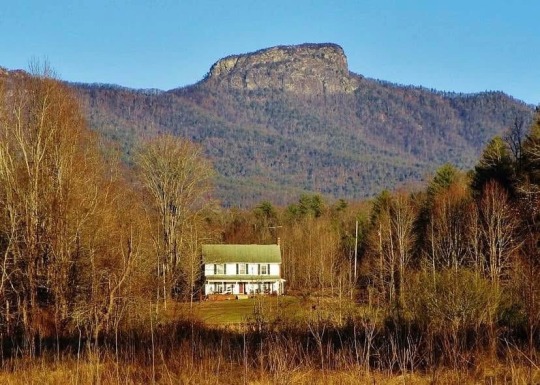
Burke County, North Carolina
Table Rock is in the background. The house was built in 1903.
#burke county#table rock#appalachian#north carolina#appalachian mountains#appalachian culture#western north carolina#appalachia#the south#nc mountains#early 1900s#1900s#farmhouse#old home#appalachian history#old house
152 notes
·
View notes
Text
You're telling me there's a Seam kid named Blair? As in the Battle of Blair Mountain??? Mz Collins I fucking love you.
32 notes
·
View notes
Text

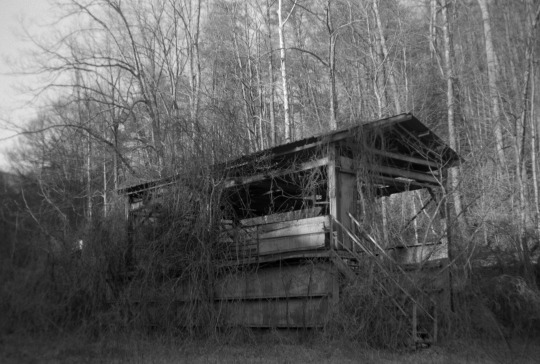
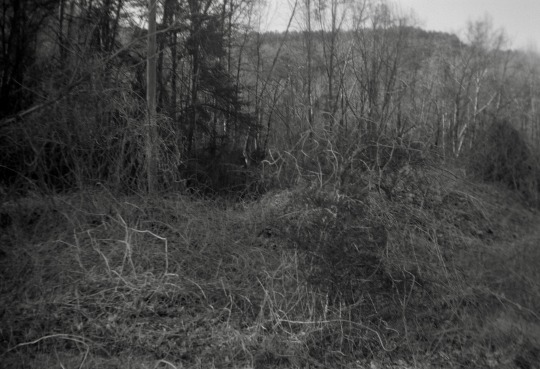

“Before he suffocated in the Fraterville Mine in 1902, Powell Harmon wrote [on the wall]: 'Dear wife and children, my time has come to die. I trust in Jesus. Teach the children to believe in Jesus. We are all almost smothered. I hope to meet you all in heaven. May God bless you all wife and children for Jesus sake goodbye until we meet to part no more. My boys, never work in the coal mines. Henry and Condy be good boys and stay with your mother and trust for Jesus sake.' Condy Harmon did not follow his father’s advice. He died in the Cross Mountain Mine explosion and is buried next to his father in Longfield Cemetery” (Coal Creek Watershed Foundation, Inc., COAL CREEK: WAR AND DISASTERS).
(all photographs w/o alt text are by me around the prep plant and laydown yard/previous power plant site at Slatestone Mine, formerly known as the Cross Mountain Mine, located in the Briceville-Fraterville-Coal Creek area - Anderson County, Tennessee)
I implore you to read more about the harrowing Cross Mountain Mine disaster (and its predecessors – most notably the Fraterville explosion) from these sources: https://www.coalcreekaml.com/Legacy5.htm & https://www.appalachiabare.com/coal-creek-part-3-cross-mountain/.
38 notes
·
View notes
Text
So tiktok is dying by a thousand papercuts and I'm going to miss those communities. If you are part of the following communities please sound off so I can find you:
Gramdmacore
Thrifting
Gardening and homesteading
Cottagecore
Sewing
Vintage fashion
Fuck the government. Seriously. Fuck them.
Anticapitalist
Appalachian history and culture
Cooking on a budget
Canning and food preservation
Semicrunchy but still believes in vaccines
Gentleparenting
All things nerdy and dorky. Comics, dnd, video games, literature, history, you name it i probably enjoy some extent of it.
#grandmacore#dnd#dnd 5e#doctor who#embroidery#sewing#fashion history#anti capitalism#homesteading#gardening#canning and food preservation#appalachian history#cottagecore#vontage#vintage#thrifting
28 notes
·
View notes
Text
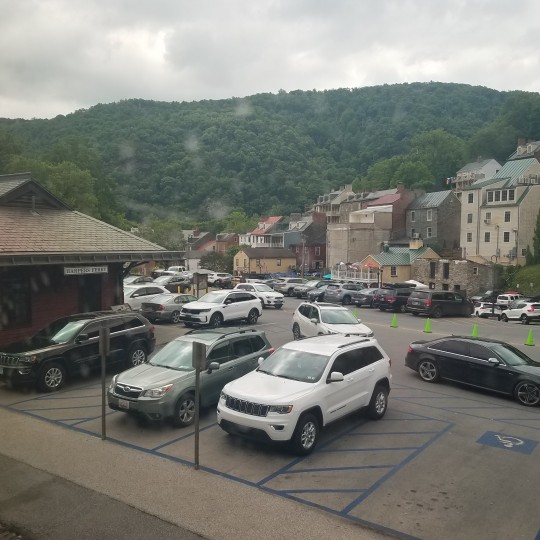
#i took this pic as my train went through harpers ferry#Harper's ferry#west virginia#appalachia#my photography#TGUT#TGUTOC#transgenderunionthug#photography#john brown#appalachian history
11 notes
·
View notes
Text
i was digging through archival news footage from the 1989-1990 pittston coal strike to cheer up my papaw, who has been going through a rough patch medically. he is a lifelong UMWA member and was part of the pittston strike.
i found some clips of the woman who is practically my godmother, sister bernie kenny, being interviewed. she was arrested in july 1989 for "impeding traffic," aka driving slowly on mountains in a winnebago that was outfitted as a mobile health care van, logically. just so happens some *non pittston* coal trucks were behind her, and she was wearing a camouflage scarf; camouflage being the uniform of the striking miners. the police saw this as an opportunity to punish the community and the striking workers. all charges against her were dropped.
solidarity forever.
#pittston strike#a strike like no other strike#labor history#umwa#united mine workers of america#coal mining#solidarity forever#appalachia#appalachian history#my post
10 notes
·
View notes
Text
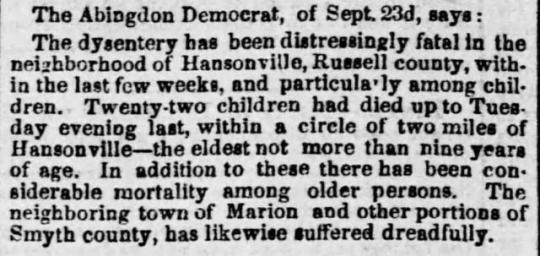
Newspaper article from September 1854 about the area I'm from in the Appalachians
9 notes
·
View notes
Text
the appalachian murder ballad <3 one of the most interesting elements of americana and american folk, imo!
my wife recently gave me A Look when i had one playing in the car and she was like, "why do all of these old folk songs talk about killing people lmao" and i realized i wanted to Talk About It at length.
nerd shit under the cut, and it's long. y'all been warned
so, as y'all probably know, a lot of appalachian folk music grew its roots in scottish folk (and then was heavily influenced by Black folks once it arrived here, but that's a post for another time).
they existed, as most folk music does, to deliver a narrative--to pass on a story orally, especially in communities where literacy was not widespread. their whole purpose was to get the news out there about current events, and everyone loves a good murder mystery!
as an aside, i saw someone liken the murder ballad to a ye olde true crime podcast and tbh, yeah lol.
the "original" murder ballads started back across the pond as news stories printed on broadsheets and penned in such a way that it was easy to put to melody.
they were meant to be passed on and keep the people informed about the goings-on in town. i imagine that because these songs were left up to their original orators to get them going, this would be why we have sooo many variations of old folk songs.
naturally then, almost always, they were based on real events, either sung from an outside perspective, from the killer's perspective and in some cases, from the victim's. of course, like most things from days of yore, they reek of social dogshit. the particular flavor of dogshit of the OG murder ballad was misogyny.
so, the murder ballad came over when the english and scots-irish settlers did. in fact, a lot of the current murder ballads are still telling stories from centuries ago, and, as is the way of folk, getting rewritten and given new names and melodies and evolving into the modern recordings we hear today.
305 such scottish and english ballads were noted and collected into what is famously known as the Child Ballads collected by a professor named francis james child in the 19th century. they have been reshaped and covered and recorded a million and one times, as is the folk way.
while newer ones continued to largely fit the formula of retelling real events and murder trials (such as one of my favorite ones, little sadie, about a murderer getting chased through the carolinas to have justice handed down), they also evolved into sometimes fictional, (often unfortunately misogynistic) cautionary tales.
perhaps the most famous examples of these are omie wise and pretty polly where the woman's death almost feels justified as if it's her fault (big shocker).
but i digress. in this way, the evolution of the murder ballad came to serve a similar purpose as the spooky legends of appalachia did/do now.
(why do we have those urban legends and oral traditions warning yall out of the woods? to keep babies from gettin lost n dying in them. i know it's a fun tiktok trend rn to tell tale of spooky scary woods like there's really more haints out here than there are anywhere else, but that's a rant for another time too ain't it)
so, the aforementioned little sadie (also known as "bad lee brown" in some cases) was first recorded in the 1920s. i'm also plugging my favorite female-vocaist cover of it there because it's superior when a woman does it, sorry.
it is a pretty straightforward murder ballad in its content--in the original version, the guy kills a woman, a stranger or his girlfriend sometimes depending on who is covering it.
but instead of it being a cautionary 'be careful and don't get pregnant or it's your fault' tale like omie wise and pretty polly, the guy doesn't get away with it, and he's not portrayed as sympathetic like the murderer is in so many ballads.
a few decades after, women started saying fuck you and writing their own murder ballads.
in the 40s, the femme fatale trope was in full swing with women flipping the script and killing their male lovers for slights against them instead.
men began to enter the "find out" phase in these songs and paid up for being abusive partners. women regained their agency and humanity by actually giving themselves an active voice instead of just being essentially 'fridged in the ballads of old.
her majesty dolly parton even covered plenty of old ballads herself but then went on to write the bridge, telling the pregnant-woman-in-the-murder-ballad's side of things for once. love her.
as a listener, i realized that i personally prefer these modern covers of appalachian murder ballads sung by women-led acts like dolly and gillian welch and even the super-recent crooked still especially, because there is a sense of reclamation, subverting its roots by giving it a woman's voice instead.
meaning that, like a lot else from the problematic past, the appalachian murder ballad is something to be enjoyed with critical ears. violence against women is an evergreen issue, of course, and you're going to encounter a lot of that in this branch of historical music.
but with folk songs, and especially the murder ballad, being such a foundational element of appalachian history and culture and fitting squarely into the appalachian gothic, i still find them important and so, so interesting
i do feel it's worth mentioning that there are "tamer" ones. with traditional and modern murder ballads alike, some of them are just for "fun," like a murder mystery novel is enjoyable to read; not all have a message or retell a historical trial.
(for instance, i'd even argue ultra-modern, popular americana songs like hell's comin' with me is a contemporary americana murder ballad--being sung by a male vocalist and having evolved from being at the expense of a woman to instead being directed at a harmful and corrupt church. that kind of thing)
in short: it continues to evolve, and i continue to eat that shit up.
anyway, to leave off, lemme share with yall my personal favorite murder ballad which fits squarely into murder mystery/horror novel territory imo.
it's the 10th child ballad and was originally known as "the twa sisters." it's been covered to hell n back and named and renamed.
but! if you listen to any flavor of americana, chances are high you already know it; popular names are "the dreadful wind and rain" and sometimes just "wind and rain."
in it, a jealous older sister pushes her other sister into a river (or stream, or sea, depending on who's covering it) over a dumbass man. the little sister's body floats away and a fiddle maker come upon her and took parts of her body to make a fiddle of his own. the only song the new fiddle plays is the tale about how it came to be, and it is the same song you have been listening to until then.
how's that for genuinely spooky-scary appalachia, y'all?
#appalachia#appalachian murder ballads#murder ballads#appalachian music#appalachian culture#appalachian history#appalachian#appalachian folklore#appalachian gothic#tw violence against women#cw violence against women#cw murder#tw murder#folk music#folk#txt
3K notes
·
View notes
Text
had a conversation w my pops a couple weeks ago where i was very, very mad (correct) about the coal industry bc of some coursework. his response was "that's interesting, because on my side your DNA is all coal fields". as if. that's not. the reason. i'm so mad.
anyway, from the wikipedia: "the battle of blair mountain was the largest labor uprising in United States history, and is the largest armed uprising since the American Civil War. The conflict occurred in Logan County, West Virginia, as part of the Coal Wars, a series of early-20th-century labor disputes in Appalachia."
look ik there's major sampling bias by posting this on the communism website but what do you think i'm gonna do? publish the results?
#history#us history#us politics#american politics#appalachia#labor rights#labor history#coal wars#workers strike#west virginia#appalachian history#coal#polls#history polls#snowball sampling
3 notes
·
View notes
Text
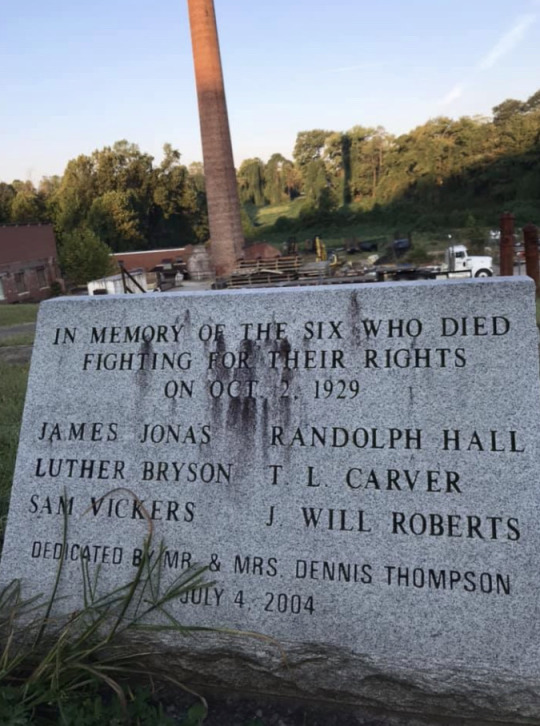
Memorial for the 6 textile workers who were shot and killed on October 1, 1929 while picketing Marion Manufacturing Company in Marion, North Carolina.
The four men were Sam Vickers, Randolph Hall, Luther Bryson, and George Jonas. Two additional workers, James Roberts and T. L. Carver, died later of their wounds. The law enforcement officers were charged with murder but would later be acquitted in court.
This memorial is located off of Baldwin Ave in Marion, North Carolina in front of the old mill.
#marionnc#marion nc#mcdowell county nc#appalachian#north carolina#appalachian mountains#appalachian culture#western north carolina#appalachia#the south#nc mountains#mcdowell county#mcdowellcounty#old mill#striker#circa 1929#southern history#appalachian history#old history
59 notes
·
View notes
Text
There's still culture left over from before the fall of the US and the rise of Panem, and now I'm wondering if the Covey used playing cards to read the future, because they're Romani and here in Appalachia, that's how a lot of people did tarot back in the old days, because of a holdover of anti Romani racism in Europe when our Romani ancestors ended up in the states. Because spirituality is seen as "lesser" in Panem, especially those of the demographics (Districts) seen as much lesser than the Capitol
14 notes
·
View notes
Text
#youtube#history#future#music#Cherokee#stone pile gap#appalachia#Appalachian history#cedar mountain#trahlyta's#trahlyta's tribe#Cherokee indian#native
4 notes
·
View notes
Text

My name is Ruth June, I go by Ruta or RJ.
I'm a student of history and archeology and have participated in archeological digs following early man into North America and have excavated Civil War sites.
I write historical fiction focusing on human interactions.
My debut book will be published later in 2023 with the title OF BLOOD AND SPURS it follows the life of a confederate cavalry scout with General Morgan's Raiders in Kentucky.
#historical fiction#fiction novel#fiction#writerslife#writing#exploration#archeology#creative writing#writers#pennsylvania history#ohio history#west virginia history#appalachian history#ancient aliens#ancient mystery#ancient culture
5 notes
·
View notes
Text
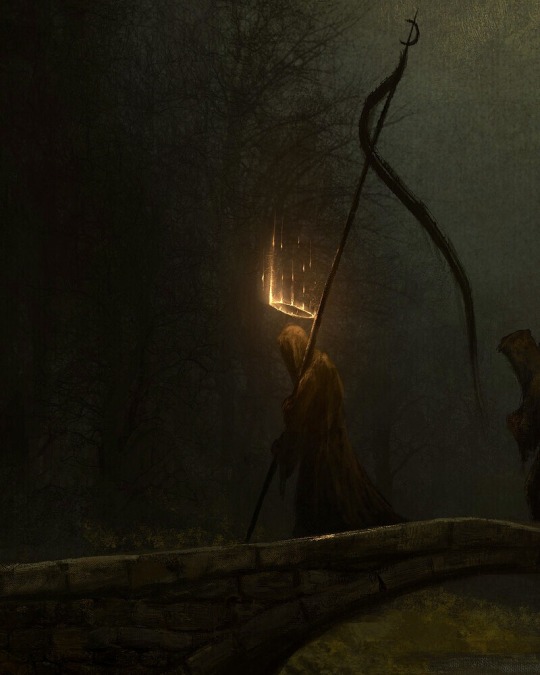
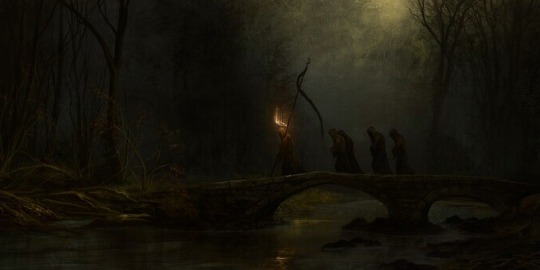
Nightwalkers by Ben J
#art#artist#artblr#painting#oil on canvas#oil painting#dark art#macabre#goth#gothic#appalachian horror#art community#horror#dark academia#artists#witch#witchcore#appalachian gothic#witchblr#appalachian witch#art blog#modern art#contemporary art#art gallery#digital art#gothcore#appalachian folklore#appalachia#art history
9K notes
·
View notes